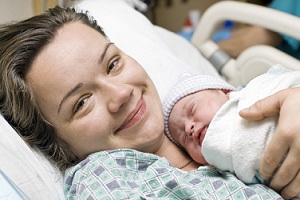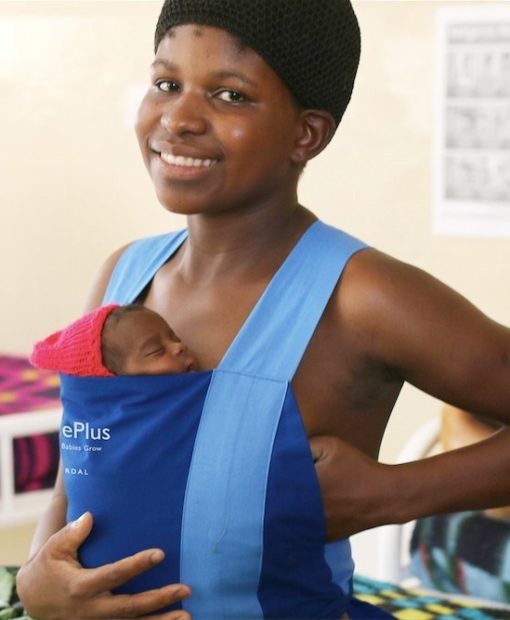C-Section Raises Risk of Blood Clots After Childbirth
Chances highest among those getting emergency cesareans
By Amy Norton
HealthDay Reporter

C-Section Raises Risk of Blood Clots After Childbirth
Women who have a cesarean section face an increased risk of potentially dangerous blood clots in the legs or lungs following childbirth, a new review confirms. Researchers who analyzed 60 international studies found that women who had a C-section were four times more likely to develop a blood clot than women who delivered vaginally.
“Emergency” C-sections — which are done when a vaginal delivery fails — carried the highest risk. Experts said the findings confirm what individual studies have already shown.
It has long been clear that pregnancy itself raises a woman’s odds of developing blood clots before or in the weeks after delivery. Women who undergo a C-section have an even greater risk — though it’s still low, according to the researchers behind the new study.
The new study estimates the risk is about three in 1,000. “Even though C-section increases the risk of blood clots, this risk remains low and the vast majority of women will not develop this condition,” said lead researcher Dr. Marc Blondon, of Geneva University Hospital in Switzerland. Still, he added, the risk should be taken into account if doctors and women are considering a C-section “without a medical indication” for it.
More generally, Blondon said, pregnant women should talk to their doctor about the issue of blood clots.
“Because conditions other than C-section may increase the risk of blood clots,” he said, “this discussion is relevant to all pregnant women.” Women who are obese or older than 35 have relatively higher clotting risks, Blondon noted. Certain pregnancy complications or medical conditions — such as infections, diabetes and high blood pressure — can also boost the risk.
The new results “really confirm” that C-section carries a clotting risk over and above pregnancy itself, said Dr. Andra James, a maternal-fetal medicine specialist at Duke University School of Medicine in Durham, N.C. Pregnancy can contribute to clots for a few reasons — including pressure on the pelvic blood vessels and changes in hormones and proteins that affect the blood’s tendency to clot. A C-section, James explained, raises the odds further because any surgery can lead to blood clots. The body responds to surgery “by mobilizing its healing mechanisms,” she said, and that involves an increase in the blood’s propensity to clot. And in many cases, the problem that prompted a woman’s C-section plays a role, James said.
“Some of the same conditions that increase the need for a C-section also increase the risk of blood clots,” she said.
James, who was not involved in the review, helped craft the American College of Obstetricians and Gynecologists’ (ACOG) guidelines on C-section and blood clot risk. When women have no other risk factors for clots, ACOG recommends a simple method that may cut the risk: using a pneumatic compression device before delivery. The devices are placed on the legs to help prevent blood from pooling in the calves.
Women are also encouraged to get up and on their feet as soon as possible after C-section delivery, James said. Immobility can contribute to blood clots as well. In cases where a woman has additional risk factors for a blood clot, Blondon said, doctors may suggest a clot-preventing medication, like heparin.
The latest findings, published recently in the journal Chest, are based on 60 studies from the past 35 years. In a subgroup of 10 studies that actually separated planned C-sections from unplanned ones, women who had a planned C-section were twice as likely to develop a blood clot as those who delivered vaginally. The risk was between three and four times higher for women who underwent an emergency C-section. That makes sense, both Blondon and James said.
“Emergency C-section induces more trauma than elective C-section, because obstetricians may be rushed to deliver the baby for maternal or fetal reasons,” Blondon explained.
Plus, he added, women may need that unplanned C-section because their labor is not progressing. A longer delivery, and more pressure on the blood vessels, may also contribute to blood clots. And that, James said, illustrates an important point: If a woman has medical indications for a planned C-section, opting for a vaginal delivery instead is not a good way to prevent blood clots. “The highest risk is in women who had a failed vaginal delivery and needed an unplanned C-section,” she said.
According to Blondon, most women diagnosed with pregnancy-related blood clots have a condition called deep vein thrombosis. That refers to clots in the legs that cause inflammation, swelling and pain. The main concern is that the clot will break free and travel to the lungs, causing a pulmonary embolism. That condition, which can be life-threatening, usually manifests itself as chest pain, coughing and difficulty breathing. Anti-clotting drugs are the main treatment for both conditions.
More information
The American College of Obstetricians and Gynecologists has more on preventing blood clots.
SOURCES: Marc Blondon, M.D., division of angiology and hemostasis, Geneva University Hospital, Geneva, Switzerland; Andra James, M.D., M.P.H., consulting professor, obstetrics and gynecology, Duke University School of Medicine, Durham, N.C.; September 2016, Chest

 October 5, 2016
October 5, 2016




 May 19, 2018
May 19, 2018 




